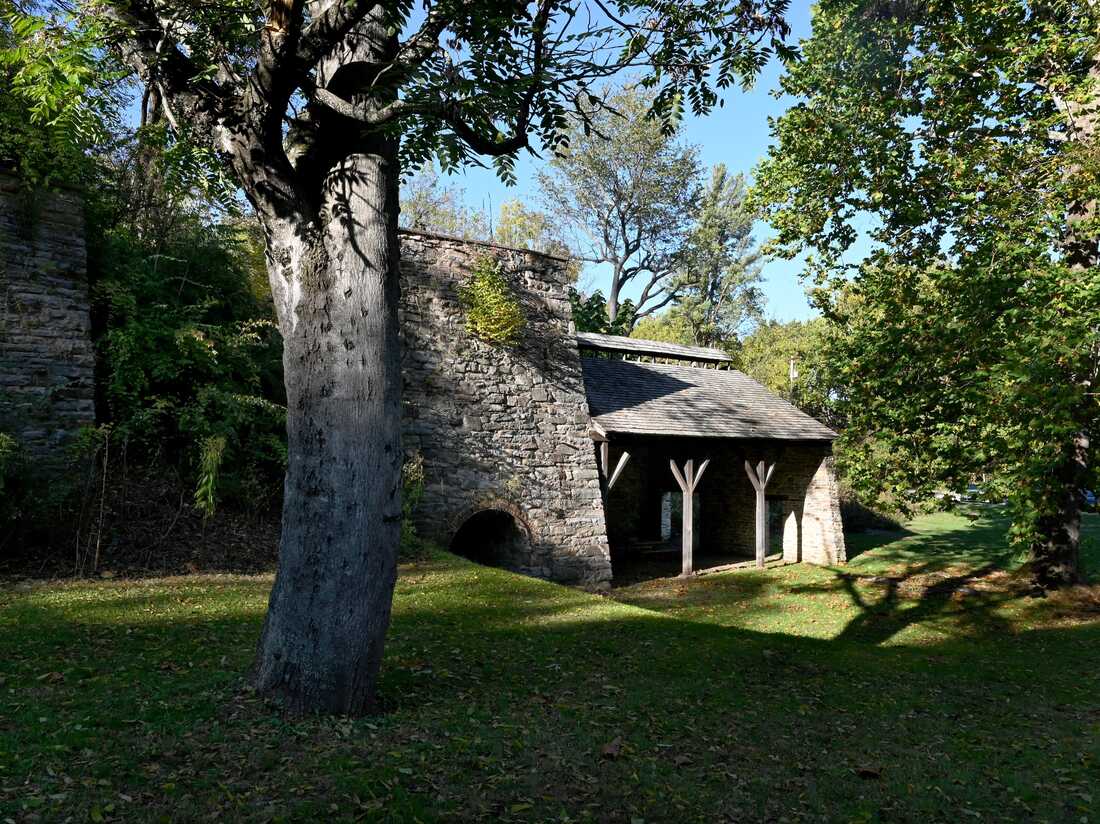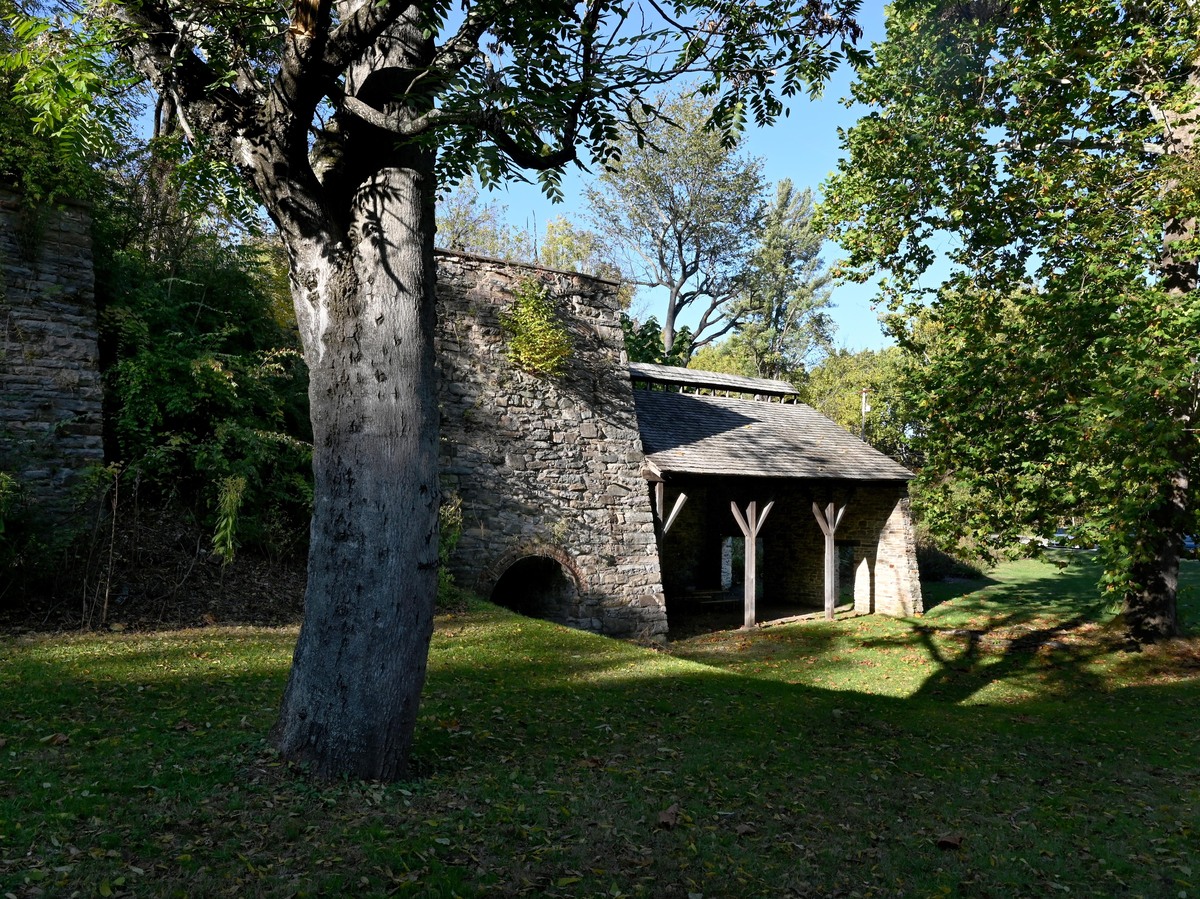
[ad_1]

The stays of Catoctin Furnace in Maryland as observed in 2020. Researchers have now analyzed the DNA of enslaved and loose Black staff there, connecting them to almost 42,000 dwelling kin.
Katherine Frey/The Washington Publish by way of Getty Pictures
disguise caption
toggle caption
Katherine Frey/The Washington Publish by way of Getty Pictures

The stays of Catoctin Furnace in Maryland as observed in 2020. Researchers have now analyzed the DNA of enslaved and loose Black staff there, connecting them to almost 42,000 dwelling kin.
Katherine Frey/The Washington Publish by way of Getty Pictures
Crystal Emory by no means knew a lot about the place she got here from. Members of the family took her from her mom for being in an interracial marriage in Sixties and Seventies, leaving her floating between houses. She hung out in an orphanage in Pennsylvania. Those studies, she says, helped instill a wish to in finding out extra about her historical past.
“I simply all the time sought after to grasp who my circle of relatives was once, and extra about myself,” says Emory, 68, now retired from a occupation in IT. “I simply began doing family tree.”
She knew grandparents have been Black, however no longer a lot else. She regarded for names in newspaper articles, and picked up what circle of relatives lore she may.
“My father’s mom would inform me tales in regards to the circle of relatives, and I used to be writing those tales down as an adolescent,” she mentioned.
It wasn’t till the Smithsonian Establishment and a historic society in Frederick County, Md. got here calling that Emory was once ready to track her historical past to the Catoctin Furnace, a small ironworking village that made utensils and ammunition for the U.S. from the overdue 1700s to the early 1900s. With the assistance of diaries and different data, they attached her to a loose, land-owning Black guy named Robert Patterson who lived within the space via a lot of the nineteenth century. Because of that, Emory was once ready to be informed a bit in regards to the existence he led.
“He owned belongings ahead of the Civil Conflict,” she mentioned. “He was once productive in the neighborhood, serving to to construct a college.”
Like Emory, Black American citizens around the U.S. are lacking vital portions in their ancestry. However for plenty of of them, such written data without delay linking them to the previous are uncommon. Some can hint the threads in their lineage again to the 1870 census – the primary depend of the U.S. inhabitants that incorporated all Black other folks. However past that, the ones threads in most cases finish – severed by way of centuries of slavery, right through which households have been break up by way of slave homeowners and investors who didn’t report familial connections.
Now researchers are taking a more in-depth have a look at the Catoctin Furnace, the usage of the DNA of forgotten enslaved and loose staff there to tie them to other folks within the reward. The analysis, printed within the magazine Science, faucets into biotech corporate 23andMe’s database of genetic knowledge from hundreds of thousands of direct-to-consumer ancestry exams. It opens a brand new roughly historic gateway for Black American citizens, one that would assist many others throughout the US in finding out extra about their heritage – and their relationships to each other.
“This paintings represents a step ahead for enabling additional find out about of the biogeographic origins and genetic legacy of historic African American populations, in particular in circumstances the place documentation is proscribed, as is not unusual,” says Henry Louis Gates Jr., director of the Hutchins Middle for African & African American Analysis at Harvard College and an creator of the find out about.
Unearthing genetic connections
In 1979, a up to now unknown cemetery at Catoctin Furnace was once discovered and excavated because the state labored on a freeway within the space. The unmarked our bodies have been put within the care of the Smithsonian. Now, with extra complex strategies of amassing historical DNA, the Catoctin Furnace Ancient Society, the Smithsonian, Harvard College and the biotech corporate 23andMe have attached 27 of the ones our bodies to almost 42,000 other folks from the present-day who’re similar one way or the other to the folks buried there – and to one another.
Additional DNA research was once ready to hone down the 42,000 other folks to a listing of nearer kin.
“There was once a smaller subset of slightly below 3,000 individuals who percentage a in particular sturdy genetic connection to the Catoctin people, and we name those people the nearest kin,” says find out about creator Éadaoin Harney, a inhabitants geneticist at 23andMe.
The ones people may vary from 5 to 9 levels of separation, overlaying quite a lot of relationships from great-great-great-grandchild to a primary cousin six instances got rid of.
The DNA additionally published clues in regards to the lives the folks buried there led.
“We are ready to revive one of the crucial details about the lives of the Catoctin people,” Harney mentioned. “We spotlight the members of the family that they have got who’re additionally buried within the cemetery. We are also ready to speak about one of the crucial well being problems that they could have suffered from like sickle cellular anemia, and in addition speak about their ancestral origins.”
There are nonetheless mysteries about who could also be similar to these other folks discovered at Catoctin Furnace.
“We have no concept who those other folks have been, as a result of they are nameless throughout the cemetery,” mentioned Elizabeth Comer, the president of the Catoctin Furnace Ancient Society and a find out about creator. “We’ve got put in combination, the usage of our genealogical analysis and our historic documentary analysis, a listing of 271 names of enslaved people who labored on the furnace. However we’re not able, at this level, to attach the ones names to a person within the cemetery.”
The analysis does, alternatively, permit scientists to combination knowledge that issues to the place the Catoctin citizens’ ancestors as soon as lived, giving anthropologists an concept of the place in Africa they have been taken from.
“You’ll be able to tie other folks to express areas in Africa corresponding to Senegambia and west central Africa,” says Douglas Owsley, a curator on the department of organic anthropology on the Smithsonian Establishment and one of the vital find out about authors. “After which in Europe, some people have a large amount of Ecu ancestry.”
‘A blueprint for long term research’
Fatimah L. C. Jackson, a biologist and anthropologist at Howard College who was once no longer concerned within the find out about, mentioned the paintings was once groundbreaking no longer simply in its findings, however in its makings.
“What makes the paintings of Harney et al. so pioneering is that the analysis was once initiated by way of an engaged local people of African American citizens and effects have been structured to satisfy the desires, priorities, and sensibilities of the bigger African American neighborhood,” she wrote in a viewpoint article that accompanied the paper in Science. “That is the best way that this kind of analysis will have to be carried out, and it supplies a blueprint for long term research.”
The Smithsonian, Harvard and the historic society haven’t begun to touch any of the just about 3,000 other folks out on this planet who’re nearer kin to the folks buried on the Furnace.
Comer says she hopes that they may be able to in spite of everything be tracked down.
“That historical past has been obfuscated, it is been erased, it is been eradicated from our narrative,” she mentioned. “Our entire being is to reconnect with a descendant neighborhood, each jointly and without delay.”
Comer says she hopes the descendants can shape a society, similar to the descendants of the Mayflower have, to stick in contact and construct a neighborhood.
[ad_2]

